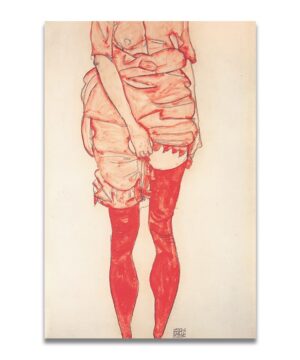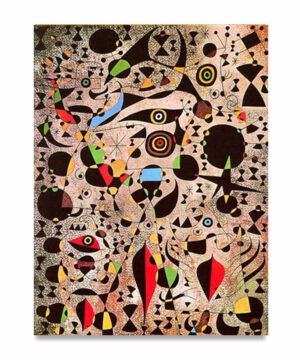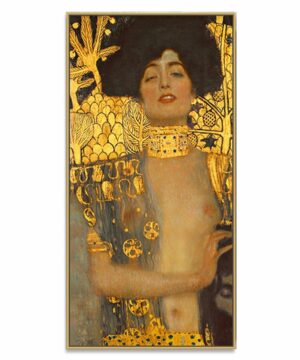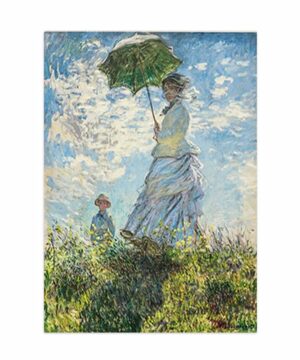As one of the leaders of the Vienna Secession, Gustav Klimt was a master of SymbolismSymbolism was a late 19th-century art movement of French, Belgian, and Russian origin. Poets and fine artists were seeking to represent absolute truths using metaphorical images in reaction against realism and naturalism. Content of both images and poetry were suggestive contents to express mystical ideas, emotions, and states of mind. Paul Gauguin, Nave Nave Mahana (1869) The term was coined More. He embedded allusions to the human psyche in extravagantly decorated patterns and figures populating his canvases. In his artwork, he incorporated lavishly painted figures with allusions to sexuality and the human psyche, often carrying messages of sexual liberation, pleasure, and mental burden. In “The Maiden”, the erotic component is evident but damped in favour of a narrative approach. The paintingPainting is a fundamental form of visual art that has been practiced for thousands of years. It involves applying pigment to a surface such as canvas, paper, or a wall. Painting can be explored through various styles, techniques, and mediums, each offering unique possibilities for expression and creativity. Historical Background • Ancient Beginnings: The history of painting dates back to More exemplifies Klimt’s departure from his Golden Period in his later years.
Where is the picture “The Maiden” today?
The original picture of “The Maiden” is on permanent display at the National Gallery in Prague today.
What’s in it?
“The Maiden” depicts seven intertwining women of different ages bundled in a cyclical shape. They wear gowns and are wrapped in long scarves decorated with organic forms, flowers, and swirls. The young women have their eyes closed and subtle smiles on their lips as if dreaming.
Art historians have interpreted “The Maiden” to be narrating a girl’s fantasy about her future, seeing herself wandering through different stages of her life. Sexual awakening is depicted in the naked women surrounding the central figure in an orgy-like formation. The patterns on her dress such as the spirals are inspired by classical Greek and Byzantine symbols of fertility which Klimt used frequently in his compositions.
What’s the context?
“The Maiden” exemplifies Klimt’s departure from his Golden Period, in which he created famous paintings like “Judith and the Head of Holofernes” (1901), the “Portrait of Adele Bloch-Bauer I” (1907), and “The Kiss” (1907-1908). In “The Maiden”, Klimt uses a colour palette most likely inspired by expressive works of Henri MatisseFrench artist Henri Matisse (1869 – 1954) is, along with Pablo Picasso, commonly regarded as pioneers in the revolutionary development of the visual arts in the 20th century. He was born to generations of weavers and raised in the northern French commune Bohain, famous for its luxury fabrics. The early exposure to textiles strongly shaped his visual language, his sense More, Henri de Toulouse-Lautrec, and the FauvismThe Fauvism art movement applies to a group of modernist artists in the early 20th century including Henri Matisse and André Derain, who emphasized strong colour contrasts and painterly qualities with fierce brushwork over realistic values. Fauvism as a style started around 1904 and continued far beyond 1910. The group of Fauves however only worked together for the years between More art movement. While the generous ornamental use of gold leaf drew attention away from the protagonists making his previous paintings look pattern-like, the usage of vivid colour palettes with dominating purple, greens, and reds has the viewer focus on the characters themselves.
The picture was one of Klimt’s last paintings completed before he succumbed to the worldwide influenza epidemic in 1918. He left behind an unfinished paintingPainting is a fundamental form of visual art that has been practiced for thousands of years. It involves applying pigment to a surface such as canvas, paper, or a wall. Painting can be explored through various styles, techniques, and mediums, each offering unique possibilities for expression and creativity. Historical Background • Ancient Beginnings: The history of painting dates back to More with the title of “The Bride”, which is thought to be the second part of the narrative after “The Maiden”: The girl wakes up from her dream to get married.
Chatter and Prattle
- Another interpretative approach favours the understanding of a homoerotic narrative of “The Maiden”. In this sense, the picture is seen to be narrating the dream of a young woman being in sexual contact with other girls. Sexuality and love were common themes found in Gustav Klimt’s works. Several paintings, including “The Kiss”, and numberless sketches are examples of the artist’s focus on romantic intimacy.
- Although the paintingPainting is a fundamental form of visual art that has been practiced for thousands of years. It involves applying pigment to a surface such as canvas, paper, or a wall. Painting can be explored through various styles, techniques, and mediums, each offering unique possibilities for expression and creativity. Historical Background • Ancient Beginnings: The history of painting dates back to More “The Maiden” does not candidly showcase a sexual theme, preliminary sketches reveal that Klimt intended the central character to openly display her vagina. Klimt’s art was widely neglected for much of the 20th century since some of his work provoked a storm of opposition at public spaces.
Do you want to comment on this text or add information? We would like to hear from you.
Recommended Readings:
This article may contain compensated links. Please read Disclaimer for more info. As an Amazon Associate, I earn from qualifying purchases.
Susanna Partsch (2012): Gustav Klimt: Painter of Women
Eva di Stefano (2008): Gustav Klimt: Art Nouveau Visionary
Michael Kerrigan (2015): Gustav Klimt: Art Nouveau and the Vienna Secessionists (Masterworks)
Gilles Néret (2015): Klimt (Basic Art Series 2.0)
Tobias G. Natter (2018): Gustav Klimt. Drawings and Paintings (Bibliotheca Universalis)













Reviews
There are no reviews yet.